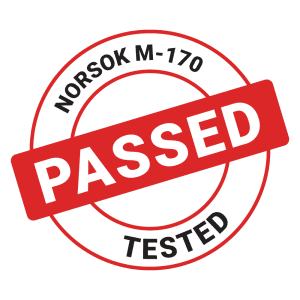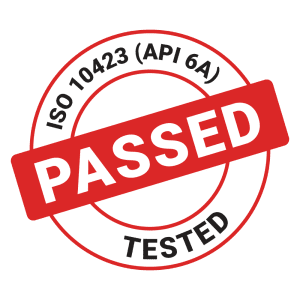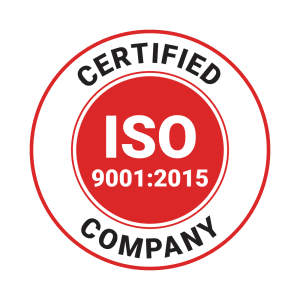
Simple Design, Exceptional Performance
O-Rings



Simple Design, Exceptional Performance



In the world of mechanical engineering, where precision and durability can’t be compromised, O-Rings play an indispensable role. These seemingly simple, circular seals are engineered marvels, made from a variety of elastomeric materials like Nitrile, Silicone, and Fluorocarbon, each selected for its unique properties to meet the specific demands of an application.
The success of an O-Ring seal hinges on getting the details right—squeeze for that perfect compression ensuring tight seals, gland fill for the right occupancy in its housing ensuring it stays in place under pressure, and stretch, to ensure it fits snugly without distorting under stress. It’s this blend of simplicity in design and complexity in function that makes O-Rings a favorite among mechanical engineers, providing reliable, cost-effective sealing solutions across industries, from the depths of the ocean to the vacuum of space.
You’ve made it this far, but we know there is still more to discuss. Click on the book a meeting button below and we can discuss over a phone or video call. You can also email us at info@kcseals.ca.
In the world of mechanical engineering, where precision and durability can’t be compromised, O-Rings play an indispensable role. These seemingly simple, circular seals are engineered marvels, made from a variety of elastomeric materials like Nitrile, Silicone, and Fluorocarbon, each selected for its unique properties to meet the specific demands of an application.
The success of an O-Ring seal hinges on getting the details right—squeeze for that perfect compression ensuring tight seals, gland fill for the right occupancy in its housing ensuring it stays in place under pressure, and stretch, to ensure it fits snugly without distorting under stress. It’s this blend of simplicity in design and complexity in function that makes O-Rings a favorite among mechanical engineers, providing reliable, cost-effective sealing solutions across industries, from the depths of the ocean to the vacuum of space.
| MATERIAL | DESCRIPTION | TEMPERATURE RANGE | DO NOT USE IN | COMPRESSION SET RESISTANCE | HEAT AGING RESISTANCE | TEAR RESISTANCE |
| Standard Grade Viton® | FKM type A commercial grade compound. Off the shelf, low cost, and highly accessible Viton® compound. | -20°C to +205°C, -4°F to 400°F | Strong Polar Solvents, Methyl Ethyl Ketone, Methyl Isobutyl Ketone, Ethylene Diamine, Acetone, phosphate ester hydraulic fluids, Ammonia, Concentrated Sulfuric Acid, Concentrated Nitric Acid, Chloroform, Methanol, Ketones and Ester. | Excellent | Excellent | Good |
| NORSOK M-710 and NACE TM0297 CERTIFICATED approved FKM. | Specifically designed for sealing performance in the oil and gas sector. The V911 compound has passed testing for NORSOK M710 and NACE TM0297, which is critical for rubber sealing materials in applications such as subsea use, control systems and valves. These tests provide standards for rapid gas decompression (RGD) and sour gas (H2S) aging on elastomers. | -30°C to +205°C -22°F to 400°F | Strong Polar Solvents, Methyl Ethyl Ketone, Methyl Isobutyl Ketone, Ethylene Diamine, Acetone, phosphate ester hydraulic fluids, Ammonia, Concentrated Sulfuric Acid, Concentrated Nitric Acid, Chloroform, and Methanol. | Excellent | Excellent | Excellent |
| Low Temp Viton | KC Seals LTV FKM compound is formulated for services requiring low temperature, rapid gas decompression (RGD) and offers excellent compression set resistance. Features include- RGD resistant per ISO 23936-2, H2 S resistant per ISO 23936-2 (up to 10%), and superior compression set and extrusion resistance. | -50°C to +205°C -50°F to 400°F | Strong Polar Solvents, Methyl Ethyl Ketone, Methyl Isobutyl Ketone, Ethylene Diamine, Acetone, phosphate ester hydraulic fluids, Ammonia, Concentrated Sulfuric Acid, Concentrated Nitric Acid, Chloroform, and Methanol. | Excellent | Excellent | Good |
| Viton Extreme™ | Viton™ Extreme™ ETP-600S combines the thermal resistance of Viton™ fluoroelastomers with unique chemical and environmental resistance beyond the capacity of conventional fluoroelastomers. Key benefits of using this compound include: Excellent resistance to acid, hydrocarbon, and low molecular weight esters, ketones, and aldehydes. Inherent resistance to base attack and low volume change in highly caustic solutions, amines, and hot water. Low temperature flexibility. Compression set and physical properties for improved seal performance. | -20°C to +225°C -4°F to 437°F | Moltern or gaseous alkali metals, fluorinating agents, certain ketones and esters, and halogenated solvents at high temepratures. | Excellent | Excellent | Good |
| Aflas® | Aflas® is becoming more and more of a staple in the oil and gas sector. Mostly because of its excellent steam; in fact, Alfas® was unaffected by extended exposure to 200°C in steam. Alfas® also boasts: Resistant to acids and bases, amines and H2S resistance, Ozone resistance and is resistant to highly reactive organic and inorganic chemicals. | -4 to 232°C 25°F to 450°F | Aromatic Fuels, Ketones, Chlorinated Hydro Carbons, Esters, Strong polar solvents, aromatic hydrocarbons, concentrated strong acids at high temperatures, ammonia gas under pressure and temperauture, Halogenated compounds, and Nitro hydrocarbons. | Excellent | Excellent | Good |
| Standard Grade HNBR | A general applications compound HNBR. HSN provides good chemical resistance to crude oil, lubricating agents and oil additives with superior resistance to carbon dioxide, water, drilling mud and amine corrosion inhibitors. HSN is off the shelf, low cost, and highly accessible HNBR compound. | -40°C to 160°C -40°F to 325°F | Strong polar solvents, concentrated oxidizing acids, chlorinated hydrocarbons, aromatic aolvents, esters and ketones, strong bases, aldehydes, phosphate ester hydraulic fluids, and ammonia gas. | Good | Good | Excellent |
| NORSOK M-710 and API 6A approved HNBR 90 | Specifically designed for sealing performance in the oil and gas sector. The H9120 compound has passed testing for NORSOK M710, API6A and NACE TM0297, which is critical for rubber sealing materials in applications such as subsea use, wellhead, control systems and valves. These tests provide standards for rapid gas decompression (RGD) and sour gas (H2S) aging on elastomers. | -40°C to 160°C -40°F to 325°F | Strong polar solvents, concentrated oxidizing acids, chlorinated hydrocarbons, aromatic aolvents, esters and ketones, strong bases, aldehydes, phosphate ester hydraulic fluids, and ammonia gas. | Good | Good | Excellent |
| Standard Grade NBR (BUNA) | Low-cost general-purpose compound. Even with its low cost, Nitrile still offers good resistance to compression set and tear/abrasion. Nitrile is resistant to many petroleum oils/greases, hydraulic fluids, alcohol, ambient water, silicone greases, Diester base lubricants and ethylene-glycol based fluids. | -35°C to +120°C -30°F to +250°F | Aromatic Fuels, Oxygenated automotive fuels, Strong acids and Alkalis, chlorinated solvents, petroleum oils and fuels at high temp, hydraulic fluids, atmospheric weathering, Vegetable and animal fats and oils. | Fair | Fair | Fair |
| Perfluoroelastomer 495 | A general purpose FFKM compound, Simriz® 495 performs well in a wide variety of harsh chemicals as well as under overheated steam and hot water conditions. Simriz 495 offers outstanding performance in strong acids and oxidizers making Simriz® 495 the perfect match for nearly every application in the chemical process industry. | -20°C to 230°C -4°F to 450°F | Fluorinated fluid, Uranium Hexafluoride, Molten or Gaseous Alkali metals, High-energy radiation environments, Tetrafluoromethane, and Chlorotrifluoride. | Excellent | Excellent | Excellent |
| Perfluoroelastomer 498 | Simriz® 498 is the ultimate FFKM material. Its unique patented material structure provides an outstanding long-term performance in nearly every environment. No matter if it is extreme temperatures up to 325°C or harsh chemicals or even overheated steam and hot water. Simriz® 498 is the best match for every oil and gas application. | -6°C to 325°C 21°F to 617°F | Fluorinated fluid, Uranium Hexafluoride, Molten or Gaseous Alkali metals, High-energy radiation environments, Tetrafluoromethane, and Chlorotrifluoride. | Excellent | Excellent | Excellent |
| Perfluoroelastomer 134 | NORSOK M710 certified, SZ134 combines RGD and broad chemical resistance as well as a high thermal stability. Furthermore, SZ134 can withstands extremely high pressure as well as steam sterilization and autoclaving. | -15°C to 230°C 5°F to 450°F | Fluorinated fluid, Uranium Hexafluoride, Molten or Gaseous Alkali metals, High-energy radiation environments, Tetrafluoromethane, and Chlorotrifluoride. | Excellent | Excellent | Excellent |
| EPDM | EPDM is a copolymer of ethylene and propylene, and further a terpolymer of ethylene and propylene with a small amount of a third monomer (usually a diolefin) to permit vulcanization with sulfur. Generally Ethylene Propylene Rubber possesses excellent resistance to ozone, sunlight and weathering, and has very good flexibility at low temperature, good chemical resistance (many dilute acids and alkalis, polar solvents), and good electrical insulation property. | -55°C to 125°C -67°F to 257°F | Mineral oil, petroleum-based fluids, solvents such as benzene, toluene, xylene, concentrated acids like sulfuric and nitric acid, halogenated solvents including chloroform and carbon tetrachloride, aromatic hydrocarbons, hydrocarbon fuels, turpentine, and strong polar solvents such as acetone | Good | Good | Poor |
| SILICONE | Physically, silicones are based on silicon, an element derived from quartz. To create this class of synthetic elastomers, pendant organic groups such as methyl, phenyl and vinyl are attached to silicon atoms. The different addition of side chains can achieve significant variations in properties. Silicones have excellent heat, ozone and corona resistance, very well dielectric stability, and resistance to many oils, chemicals, and solvents. And for all elastomers, silicones possess the best flexible property at low temperature. But it also has some weakness like low tensile strength, poor tear and wear resistance. | -60°C to 225°C -76°F to 437°F | concentrated sulfuric acid, hydrochloric acid, sodium hydroxide, potassium hydroxide, hydrofluoric acid, aromatic hydrocarbons like benzene and toluene, ketones such as acetone, certain esters like ethyl acetate, strong oxidizing agents, and chlorinated solvents such as methylene chloride and trichloroethylene. | Good | Excellent | Poor |
| FLUOROSILICONE | Fluorosilicone is like silicone rubber, bonding trifluoropropyl, methyl, and vinyl as side chains. The mechanical and physical properties are similar to VMQ. However, FVMQ offers improved fuel and mineral oil resistance, but poorer hot air resistance then standard VMQ. | -60°C to 177°C -76°F to 350°F | Ketone, highly reactive or concentrated acids like sulfuric and nitric acid, strong bases such as potassium hydroxide, phosphoric acid, alkali metals including sodium and potassium in their molten states, ammonia solutions, acetone cyanohydrin, ethylene diamine, nitro hydrocarbons, and hydrocarbon fuels with high aromatic content such as xylene and toluene. | Good | Excellent | Poor |
You’ve made it this far, but we know there is still more to discuss. Click on the book a meeting button below and we can discuss over a phone or video call. You can also email us at info@kcseals.ca.
